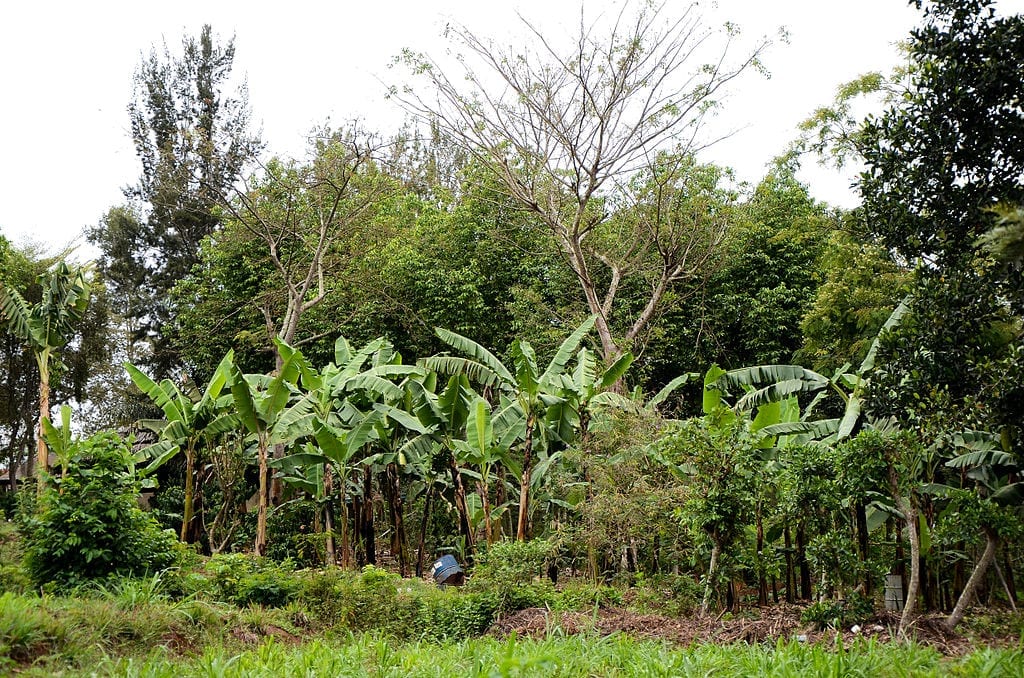Think the California fires, Amazon deforestation, globalization, and climate change are unrelated? You’re not seeing the forest for the trees.
With a wave of populist authoritarianism rippling around the globe, dark days are coming for the environment we all depend upon to live. We can already see the destruction altering the global climate. Any sane analysis would result in a sober step backwards from the brink, but these are not sane times. Instead, we’re going all-in to see who can gobble up the most resources while hoping the hindmost quietly expire rather than fight back. Putting the blame entirely on individual consumer choices fails to see the forest for the trees, but the rapidly accumulating predicaments are so severe that everyone’s help is needed to keep both the trees and the forest alive. Like we’ve known all along, forests and the trees in them will be crucial allies in the battle ahead.

While California burns, mainstream news outlets no longer balk at the mention of climate change as a contributing factor to the devastation, if not the main culprit. What was once the West Coast’s rainy season has become the new fire season, with frightening implications for future mudslides rolling down California’s denuded hills. We got here because a growing population expanded into a paradise that is occasionally consumed by flames as part of the natural cycle of life. However, rather than emphasizing retreat or allowing more controlled burns as part of a strategy that saves lives while working with nature, the conservative answer of bleeding the forest for the trees shows that the only tool in the capitalist toolbox is more consumption. Logging tends to remove the biggest, sturdiest trees instead of the choking underbrush that spreads fire, and trees aren’t necessarily the problem anyway.
Further south, Jair Bolsonaro, Brazil’s new far-right President who campaigned on expanding exploitation of Indigenous reserves in the Amazon, plans to free the forest for the trees and resources underneath to be plundered for immediate gain. Doing so would destroy lifeways that have proven sustainable for thousands of years, but according to Bolsonaro, “minorities have to adapt to the majority, or simply disappear.” The Amazon isn’t only a vast source of food and medicine for its inhabitants, it’s crucial to the world’s environmental survival. If anything, more countries ought to learn from The Gambia’s success in returning control of more of its forests to local communities who have an interest in maintaining the integrity of their treasures.
In Argentina, pressure from the global market means clearing the forest for the trees to be burnt and swaths of land turned over to illegal and untraceable soybean farming. How much of the “locally raised” meat on European dinner plates was fed illegally grown Argentine soy, resulting in the displacement of yet more Indigenous groups and egregious destruction of the Gran Chaco forest? It’s impossible to tell, because there’s little transparency in the system. Next quarter’s profits are too important to be sacrificed for ethical sourcing and long term ecological health.
All of this is happening just as we need more trees, not fewer, around the world. UN scientists have called for protecting and maintaining healthy forests, not just to sequester carbon to mitigate climate change, but as a crucial part of the worldwide water cycle. Agroforestry could provide nutritious sustenance and cash crops for the world’s poorest while protecting ecosystems from the erosion and nutrient-stripped soil inherent in industrial agriculture. A recent study suggested that the United States could offset 21% of the nation’s annual greenhouse gas emissions simply through proper forest, grassland, and soil management, a figure roughly equivalent to taking every car and truck off American roads. And trees are beautiful, too: verdant tree-lined streets make walking or biking more comfortable, increase property values, and make us happier. Seeding a forest for the trees within makes psychological, economic, and ecological sense.
It’s all connected, and there is no “away.” California wildfire smoke affects air quality in Massachusetts. European meals shred Argentine forests. When the Amazon doesn’t serve as well as a carbon sink, permafrost melts and kills Canadian forests. Dead forests mean fewer fish. But the good news is that feedback loops can be beneficial, if we can turn the tide. We need the forest for the trees to save us, but we have to hold up our end of the bargain and save the trees first.
Related: Would Forests Die Without Businesses?


Join the conversation!